Caving
Adventure seekers and thrill seekers, listen up! Have you ever thought about exploring the unknown depths of a cave? Caving, also known as spelunking, is an exciting and physically challenging activity that involves exploring and navigating through natural underground cave systems.
But where can you find these underground wonders? Caves can be found all over the world, from the arid desert landscapes of the southwestern United States to the humid rainforests of Central and South America. In fact, there are over 50,000 known caves in the United States alone, with many more yet to be discovered.
So why go caving? For starters, caves are home to unique and diverse ecosystems, including rare and endangered species of animals and plants that can only be found underground. Caves also have a rich history, with some dating back millions of years and serving as ancient sacred sites for indigenous cultures. And let's not forget the thrill of discovery and the adrenaline rush of navigating through tight, dark, and sometimes wet passages.
But caving isn't for the faint of heart. It requires physical strength, endurance, and a good head for problem-solving. Proper safety gear and techniques are a must, including a helmet, headlamp, and appropriate clothing and footwear. It's also important to respect and protect the cave environment by following Leave No Trace principles.
So how do you get started in caving? There are plenty of public caves that are open for exploration, and many of them offer guided tours for beginners. It's a good idea to do some research and find a reputable and experienced guide or caving group to join. You can also try joining a local caving club or group, which can provide training, gear, and support for new cavers.
So don't let your fear of the unknown hold you back. Embrace your adventurous spirit and consider giving caving a try. Who knows what hidden wonders and secrets you might discover deep within the earth?
Caving Etiquette
Damage
Don’t break or leave anything in caves. Caves are awesome places to explore and they deserve your respect. Don’t leave them as a mess.Don’t leave graffiti
Not only is graffiti illegal, it is dangerous. Spraying paint in caves emits toxins into the air which are detrimental to our lungs. Aerosol cans contain methanol which is biodegradable but very bad for humans. Graffiti damages cave walls and is costly to clean and repair. The better the condition of the cave, the better the experience can be for spelunkers.
Don’t touch or harm cave animals
Leave cave critters alone. If you leave them alone, they will leave you alone as well. This is their territory, not yours. Let them be. Bats can be especially fragile, so be sure to be cautious and intentional in all your caving actions.
Fires
Caves are no place for fires.Fires leave damage such as stains on cave walls and leave a mess on the cave floor. Fires need proper ventilation which caves usually do not have. As a cave fills with smoke, oxygen is depleted and people can suffocate. Don’t build ‘em.
Litter
Leave no trace. Litter left in caves is hard to remove and can cause pollution as well as damage to cave life. If you pack it in, be sure to pack it out with you.
Permission
Many caves are privately owned or heavily regulated, therefore, obtaining permission prior to caving is extremely important. Be respectful of the cave owners and be sure to act politely so others can enjoy the cave after you.
Personal Waste
A cave is not a bathroom. Caves lack drainage and ways to dispose of waste. Do your business prior to entering the cave or wait until you exit.
“ROCK!”
If something becomes dislodged which could potentially harm another person, be sure to yell “ROCK” and give them a heads up. It’s better safe than sorry.
Smoking
Don’t smoke in caves. Smoking in caves causes them to smell bad.
General Cave Safety
- Go caving with three or more people
- Remember to bring extra lights
- Dress in proper clothing for the cave
- Dress warm
- Don’t wear loose jewelry
- Make sure your glasses are securely fastened
- Cave with those who are experienced
- Don’t jump
- Stay close to a buddy
The privileges of caving are at risk whenever caves are disrespected. These incredible places to explore are unfortunately closed due to fires, vandalism, and trash. Take care of the caves so other explorers can enjoy them too.
Here's some of our favorite caves
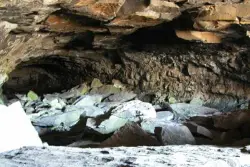
Civil Defense Caves
Rexburg, Idaho
23.0 miles N of Rexburg, IdahoThe caves are large lava tubes. The name comes from the cold war era when they were anticipated as a safe area in the case of an attack. The entrance is pretty bouldery and does require a small...
Cave 0.1-6.2 mi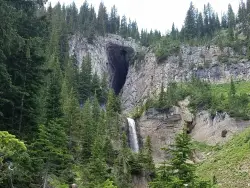
Darby Wind Cave
Driggs, Idaho
7.6 miles E of Driggs, IdahoDarby Wind Cave is a beautiful hike full of waterfalls, wildflowers, streams, and mountainous views. The sites you see will depend on the time of year you visit but it will always be beautiful and...
Backpack, Cave, Hike, Rock Climb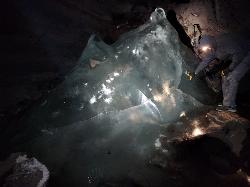
Rexburg Area Ice Caves
Rexburg, Idaho
29.1 miles N of Rexburg, IdahoNot to be mistaken with the Civil Defense Caves (which are near by), the Ice Caves are about an hour North outside of Rexburg. The Ice Caves were originally formed as lava tubes. The shape of the...
Cave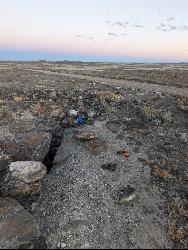
Gore's Cave
Boise City-Nampa, ID, Idaho
33.1 miles SE of Boise City-Nampa, ID, IdahoLava Tube - Cave. These are formed when fluid, molten lava flows out of the ground, it behaves like a stream of water working its way downhill. But soon the "stream" surface cools and hardens. This...
Cave 1.5 mi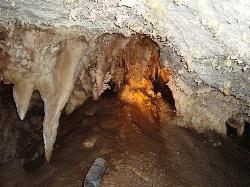
Timpanogas Cave
Provo, Utah
14.7 miles N of Provo, UtahKnown for it's colorful cave decorations, the Timpanogas cave attracts numerous visitors per year, is steep but it's paved so that visitors can access the cave. To access the cave, visitors...
Backpack, Cave, Hike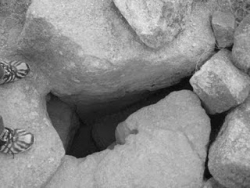
Smith's Crack
Mountain Home, Idaho
10.0 miles NW of Mountain Home, IdahoLocated near Mountain Home, this is unlike most caves in the area. It's not a lava tube but a fissure. A crack that opened when the lava cooled. The entrance is closest to the corner. For the...
Cave
Eureka Cave
Mountain Home, Idaho
5.9 miles E of Mountain Home, IdahoEureka Cave is a lava tube. In other words, this was previously a tunnel for lava flows. There's a large hole to get into the cave. While climbing equipment is helpful, most relatively fit...
Cave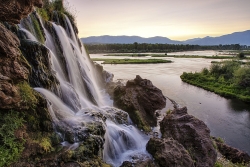
Fall Creek Falls
Swan Valley, Idaho
2.1 miles SW of Swan Valley, IdahoFalls Campground is located next to the Snake River near beautiful Swan Valley, only 45 miles east of Idaho Falls, Idaho. Mixed growth cottonwood trees provide partial shade, and grassy meadows with...
Camp, Cave, Hike, Kayak, Swim
McKinney Butte Lava Tubes
Gooding, Idaho
8.2 miles NW of Gooding, IdahoAlso known to the locals as the Spider Caves, the McKinney Butte Lava Tubes is a tunnel formed by lava flows from long ago. Similar to many lava tubes with an entrance broken from the side of...
Camp, Cave
Clay Caves North
Eden, Idaho
4.5 miles W of Eden, IdahoCave is near Eden Idaho just off the interstate a couple miles along a rougher road make sure to go to it from the north side not south side high clearance vehicle This cave is a giant...
Cave- Plan Ahead and Prepare. Know the regulations and special concerns for the area you'll visit. Prepare for extreme weather, hazards, and emergencies. Schedule your trip to avoid times of high use. Visit in small groups when possible. Consider splitting larger groups into smaller groups. Repackage food to minimize waste. Use a map and compass to eliminate the use of marking paint, rock cairns or flagging.
- Travel & camp on durable surfaces. Durable surfaces include established trails and campsites, rock, gravel, dry grasses or snow. Protect riparian areas by camping at least 200 feet from lakes and streams. Good campsites are found, not made. Altering a site is not necessary.
- Dispose of waste properly. Pack it in, pack it out. Inspect your campsite and rest areas for trash or spilled foods. Pack out all trash, leftover food and litter. Deposit solid human waste in catholes dug 6 to 8 inches deep, at least 200 feet from water, camp and trails. Cover and disguise the cathole when finished. Pack out toilet paper and hygiene products. To wash yourself or your dishes, carry water 200 feet away from streams or lakes and use small amounts of biodegradable soap. Scatter strained dishwater.
- Leave what you find. Preserve the past: examine, but do not touch cultural or historic structures and artifacts. Leave rocks, plants and other natural objects as you find them. Avoid introducing or transporting non-native species. Do not build structures, furniture, or dig trenches.
- Minimize campfire impacts. Campfires can cause lasting impacts to the environment. Use a lightweight stove for cooking and enjoy a candle lantern for light. Where fires are permitted, use established fire rings, fire pans, or mound fires. Keep fires small. Only use sticks from the ground that can be broken by hand. Burn all wood and coals to ash, put out campfires completely, then scatter cool ashes.
- Respect wildlife. Observe wildlife from a distance. Do not follow or approach them. Never feed animals. Feeding wildlife damages their health, alters natural behaviors, and exposes them to predators and other dangers. Protect wildlife and your food by storing rations and trash securely. Control pets at all times, or leave them at home. Avoid wildlife during sensitive times: mating, nesting, raising young, or winter.
- Be considerate of other visitors. Respect other visitors and protect the quality of their experience. Be courteous. Yield to other users on the trail. Step to the downhill side of the trail when encountering pack stock. Take breaks and camp away from trails and other visitors. Let nature's sounds prevail. Avoid loud voices and noises.

















